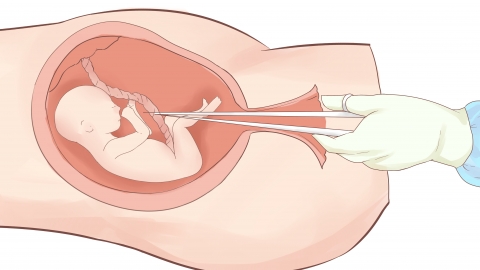How to Promote Recovery After Induced Labor
Generally, to promote post-operative recovery after induced labor, patients require medication, massage therapy, dietary regulation, lifestyle adjustment, and maintenance of external genital hygiene. The details are as follows:

1. Medication
After induced labor surgery, patients should appropriately use medications that promote uterine contractions as directed by a physician, such as Xinshenghua Granules, Fufang Yimu Capsules, etc., to help expel retained blood clots from the uterine cavity and allow the uterus to gradually return to its normal size. Anti-inflammatory medications should also be used as needed to address potential bacterial infection during the procedure and prevent gynecological inflammation.
2. Massage Therapy
During hospitalization, patients can seek assistance from professional doctors for uterine massage therapy. Using four fingers to gently press the fundus of the uterus and massaging in a clockwise direction, with appropriate intensity. This helps promote uterine contraction and accelerate the discharge of retained blood, thus facilitating uterine recovery.
3. Dietary Regulation
The post-operative diet should be light and easily digestible, avoiding spicy, irritating, or cold foods. Patients can consume more fresh vegetables and fruits to supplement vitamin C and vitamin E, as well as high-quality protein sources such as chicken, fish, and beef.
4. Lifestyle Adjustment
Patients should engage in appropriate ambulation after surgery, which is beneficial for uterine recovery and discharge of retained blood. However, prolonged bed rest should be avoided, as well as strenuous exercise and lifting heavy objects.
5. Maintain External Genital Hygiene
It is important to keep the external genital area dry and clean after surgery, and to change and wash underwear frequently. Sexual intercourse and tub bathing should be avoided for the period recommended by the physician to prevent infection.
Prior to undergoing induced labor, patients should fully understand the surgical risks and precautions and adequately prepare for the procedure. Additionally, surgery should be performed at a qualified medical institution to ensure safety.




